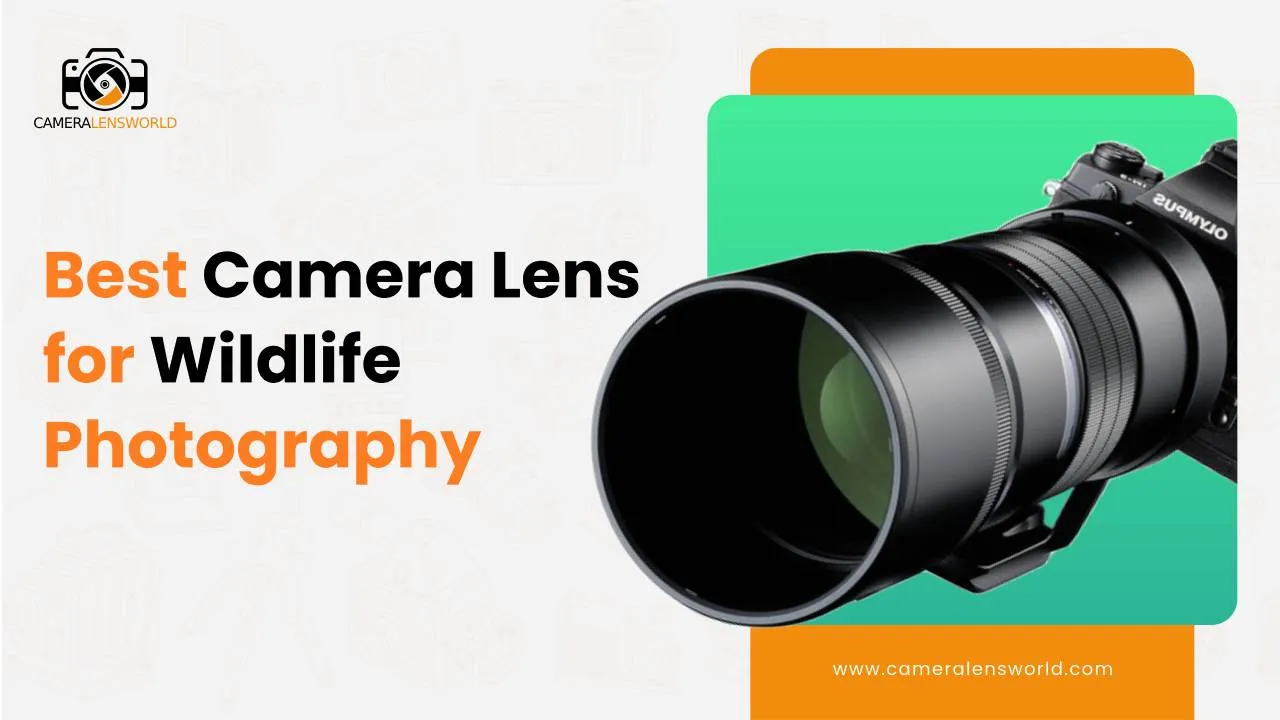
Having a deep interest in wildlife photography, I started my research to identify the best camera lens for wildlife photography. I was determined to uncover the perfect gear that would elevate wildlife photography to new heights.
This article, “Best Camera Lens for Wildlife Photography,” is the result of my dedicated quest. Suppose you’re a beginner in this field of photography. In that case, I also recommend checking out my previous article, “Beginner’s Guide to Buying Camera Lenses,” which provides a solid foundation for understanding lenses.
In the world of wildlife photography, the right lens is a game-changer. It can mean the difference between capturing breathtaking moments and missing them entirely. I’ve simplified the lens selection process in this guide, ensuring that whether you’re a newbie or a seasoned photographer, you’ll find the ideal lens to meet the unique challenges of wildlife photography.
So, let’s explore the world of camera lenses together and discover the one that will take your wildlife photography to the next level.
List of the best camera lens for wildlife photography [Quick review]
I have compiled a brief list of the best camera lens for wildlife photography.
- Tamron 70-300mm E-Mount Lens
- Sony FE 200-600mm FE-Mount Lens
- Canon 75-300mm EF-Mount Lens
- Sigma 150-600mm EF-Mount Lens
- Tamron 70-300mm Z-Mount Lens
- Nikkor 200-500mm F-Mount Lens
- Sigma 150-600mm F/5-6.3
- Canon 100-400mm F/4.5-5.6 II
- Fujifilm 70-300mm F/4-5.6:
- M.Zuiko Digital 300mm F/4
- Pentax DA 560mm F/5.6
List of best camera lens for wildlife photography [Detailed analysis]
1- Tamron 70-300mm E-Mount Lens
- The Tamron 70-300mm E-Mount Lens has a variable aperture of f/4.5-6.3.
- To give additional protection against the weather, Tamron constructed the lens with moisture-resistant construction.
- Excellent high-resolution performance is provided from the center of the image to the corners by this lens, which has been developed to eliminate chromatic aberration, a common problem with telephoto lenses.
| Brand | Tamron. |
| Type | Telephoto lens. |
| Lens format coverage | APS-C and full frame. |
| Compatible Mounting | Sony. |
| Image Stabilization | No image stabilization. |
| No.of diaphragm blades | Seven blades. |
| Lens construction | 15 elements in 10 groups. |
| Minimum focus distance | 0.8 m. |
| Weight | 545 g. |
| Adjustment | Autofocus. |
Reasons to buy:
- Moisture-resistant construction.
- Good image quality.
- Affordable.
Reasons to avoid:
- Plastic construction.
- No image stabilization.
- Some chromatic aberration.
2- Sony FE 200-600mm FE-Mount Lens
- The Sony FE 200-600mm FE-Mount Lens has a variable aperture of f/5.6-6.3.
- A fluorine coating on the front element and a Nano AR coating reduce reflections, glare, and ghosting; moreover, it is dust and moisture-resistant.
- For sports and wildlife photographers, a portable solution that offers outstanding images with less chromatic aberration is perfect.
| Brand | Sony. |
| Type | Telephoto lens. |
| Lens format coverage | APS-C and full frame. |
| Compatible Mounting | Sony. |
| Image Stabilization | Built-in image stabilization. |
| No.of diaphragm blades | 11 blades. |
| Lens construction | 24 elements in 17 groups. |
| Minimum focus distance | 2.4 m. |
| Weight | 2115 g. |
| Adjustment | Equipped with Sony’s DDSSM focusing system. |
Reasons to buy:
- Long reach.
- Excellent image quality.
- Effective image stabilization.
Reasons to avoid:
- Heavy and bulky.
- Relatively expensive with limited low-light performance.
3- Canon 75-300mm EF-Mount Lens
- The Tamron 70-300mm E-Mount Lens has a variable aperture of f/4.5-5.6.
- The lens is lightweight and compact, making it easy to take along for extended periods.
- However, the lens has been criticized for its image quality, particularly at the longer end of the zoom range, where it might suffer from chromatic aberration and softness.
| Brand | Canon. |
| Type | Telephoto. |
| Lens format coverage | Full frame. |
| Compatible Mounting | Canon EF. |
| Image Stabilization | Built-in image stabilization. |
| No.of diaphragm blades | Seven blades. |
| Lens construction | 13 elements in 9 groups. |
| Minimum focus distance | 1.5 m. |
| Weight | 480g. |
| Adjustment | USM focus adjustment. |
Reasons to buy:
- Built-in image stabilization.
- Lightweight.
- Affordable.
Reasons to avoid:
- Variable aperture.
- Lower image quality.
4- Sigma 150-600mm EF-Mount Lens
- The lens has a variable aperture of f/5-6.3.
- The lens incorporates a dust and splash-proof mount to provide additional weather protection.
- The lens incorporates five Special Low Dispersion (SLD) glass elements and one F Low Dispersion (FLD) glass element to reduce chromatic aberration and deliver exceptional image quality.
| Brand | Sigma. |
| Type | Telephoto lens. |
| Lens format coverage | Full frame. |
| Compatible Mounting | Canon EF. |
| Image Stabilization | Built-in image stabilization. |
| No.of diaphragm blades | Nine blades. |
| Lens construction | 24 elements in 16 groups. |
| Minimum focus distance | 80 cm. |
| Weight | 1930 g. |
| Adjustment | Both auto and manual focus can be used. |
Reasons to buy:
- Long telephoto reach.
- Good image quality.
- Zoom range versatility.
Reasons to avoid:
- Heavy and bulky.
- Challenging to carry and handle.
5- Tamron 70-300mm Z-Mount Lens
- The lens has a variable aperture of f/4.5-6.3.
- Tamron’s Moisture-Resistant Construction is used to make the lens, which provides further protection against the elements.
- The lens has superb high-resolution performance from the center to the corners, and axial chromatic aberration has been appropriately corrected.
| Brand | Tamron. |
| Type | Telephoto zoom lens. |
| Lens format coverage | APS-C and full frame. |
| Compatible Mounting | Nikon Z. |
| Image Stabilization | No image stabilization. |
| No.of diaphragm blades | Seven blades. |
| Lens construction | 15 elements in 10 groups. |
| Minimum focus distance | 1.5m (TELE) and 0.8m (WIDE) |
| Weight | 545 – 580 g. |
| Adjustment | The RXD stepping motor unit is exceptionally quiet. |
Reasons to buy:
- Moisture-resistant construction.
- RXD stepping motor.
- Lightweight.
Reasons to avoid:
- No image stabilization.
6- Nikkor 200-500mm F-Mount Lens
- The lens has a fixed maximum aperture of f/5.6.
- The lens is weather-sealed, protecting it from dust and moisture and increasing longevity in various environments.
- Three extra-low dispersion glass elements (ED) are used in the lens to help eliminate chromatic aberration and give exceptional image quality.
| Brand | NIkkon. |
| Type | Telephoto zoom lens. |
| Lens format coverage | Full frame. |
| Compatible Mounting | Nikon. |
| Image Stabilization | Built-in image stabilization. |
| No.of diaphragm blades | Nine blades. |
| Lens construction | 19 elements in 12 groups. |
| Minimum focus distance | 2.2 m. |
| Weight | 2090 g without a tripod. |
| Adjustment | The lens features a manual focus override and ring at the back, closer to the camera body. |
Reasons to buy:
- Excellent telephoto reach.
- Sharp image quality.
- Versatile for wildlife and sports.
Reasons to avoid:
- Heavier and bulkier.
- Requires steady support for sharp shots.
7- Sigma 150-600mm F/5-6.3
- The lens has a variable aperture of f/5-6.3.
- The front glass element of the lens includes a water and grease-repellent coating, making lens surface upkeep easy.
- The lens delivers superb high-resolution performance from the center of the image to the edges, and aberrations like axial chromatic aberration have been successfully corrected.
| Brand | Sigma. |
| Type | Telephoto. |
| Lens format coverage | Full frame. |
| Compatible Mounting | Ef mount cameras. |
| Image Stabilization | Built-in image stabilization. |
| No.of diaphragm blades | Nine blades. |
| Lens construction | 20 elements in 14 groups. |
| Minimum focus distance | 280 cm. |
| Weight | 1800 g. |
| Adjustment | AF System with Hyper Sonic Motor. |
Reasons to buy:
- Telephoto’s reach is exceptional.
- Extremely harp.
- The price is reasonable.
- Rapid autofocus
- Built-in image stabilization.
Reasons to avoid:
- There is some chromatic aberration.
- Heavy.
8- Canon 100-400mm F/4.5-5.6 II
- The lens has a variable aperture of f/4.5-5.6.
- The lens is weather-sealed, which protects it from dust and moisture and adds durability in various environmental conditions.
- The lens has exceptional sharpness from the center to the corners, and geometric aberrations on straight lines are hardly unnoticeable.
| Brand | Canon. |
| Type | Telephoto zoom lens. |
| Lens format coverage | Full frame, DSLRs, and APS-C. |
| Compatible Mounting | EF mount lens. |
| Image Stabilization | Built-in image stabilization. |
| No.of diaphragm blades | Nine blades. |
| Lens construction | 21 elements in 16 groups. |
| Minimum focus distance | 0.98 m. |
| Weight | 1570 g. |
| Adjustment | Ultrasonic Ring-Like Motor with AF System. |
Reasons to buy:
- Image stabilization.
- Weather sealed.
- Quick and fast AF system.
Reasons to avoid:
- At 100mm, there is some barrel distortion.
9- Fujifilm 70-300mm F/4-5.6
- The lens has a variable aperture of f/4-5.6.
- The lens is built with a weather-resistant construction that removes dust and moisture.
- The lens produces outstanding image quality throughout the zoom range with good sharpness and contrast.
| Brand | Fujifilm. |
| Type | Telephoto zoom lens. |
| Lens format coverage | APS-C format. |
| Compatible Mounting | Fujifilm X mount lens. |
| Image Stabilization | Built-in image stabilization. |
| No.of diaphragm blades | Nine blades. |
| Lens construction | 17 elements in 12 groups. |
| Minimum focus distance | 0.83 cm. |
| Weight | 580 g. |
| Adjustment | Linear autofocus motor with focus limiter switch. |
Reasons to buy:
- Built-in image stabilization.
- Linear AF motor.
- Weatherproof design.
Reasons to avoid:
- Defocused highlights can show an onion ring effect.
10-M.Zuiko Digital 300mm F/4
- The lens has a fixed maximum aperture of f/4.
- The lens is built with a weather-resistant construction that removes dust and moisture.
- Three Super ED and three HR glass elements are used in the lens to reduce chromatic aberration and give exceptional image quality.
- Additionally, Z coating nano assists me in reducing ghosting and flare while maintaining color contrast across the focusing range.
| Brand | Olympus. |
| Type | Super telephoto lens. |
| Lens format coverage | Micro-four thirds. |
| Compatible Mounting | Micro-four thirds. |
| Image Stabilization | Built-in image stabilization. |
| No.of diaphragm blades | Nine blades. |
| Lens construction | 17 elements in 10 groups. |
| Minimum focus distance | 1.4 m. |
| Weight | 1270 g. |
| Adjustment | Instantly swap shooting styles with manual focus clutch and Lfn. |
Reasons to buy:
- Image stabilization.
- Weatherproof construction.
- Z coating nano.
Reasons to avoid:
- Heavy.
- Without a limiter enabled, focus can be slow.
11-Pentax DA 560mm F/5.6
- The lens has a fixed maximum aperture of f/5.6.
- The lens is made of a dust-resistant and drip-proof material that protects it from the elements.
- The lens has six elements in five groups that work together to reduce chromatic aberration and deliver outstanding image quality.
| Brand | |
| Type | Super telephoto zoom lens. |
| Lens format coverage | APS-C. |
| Compatible Mounting | Pentax K mount. |
| Image Stabilization | Built-in image stabilization. |
| No.of diaphragm blades | Nine blades. |
| Lens construction | Six elements and five groups. |
| Minimum focus distance | 5.6 m. |
| Weight | 3040 g. |
| Adjustment | The autofocus driving DC motor automates the smooth autofocus operation. |
Reasons to buy:
- DC motor for effortless autofocus.
- Multi-layer HD coating.
Reasons to avoid:
- Heavy.
- Slow aperture.
What to look for in the best camera lens for wildlife photography
1- Focal length.
When choosing the best camera lens for wildlife photography, please pay close attention to its focal length. A longer focal length, such as 300mm or 500mm, is often preferred as it allows you to capture distant wildlife without disturbing them. Telephoto lenses with focal lengths in this range are ideal for wildlife photography, as they provide the necessary reach.
Remember that prime lenses with fixed focal lengths can offer exceptional image quality but may lack the versatility of zoom lenses. Ultimately, your focal length should align with the type of wildlife you intend to photograph and your shooting style.
2- Zoom VS Prime.
When choosing between zoom and prime lenses for wildlife photography, you must weigh versatility against image quality. Zoom lenses offer a range of focal lengths, making them flexible for capturing various subjects and distances. They’re excellent for dynamic wildlife encounters.
On the other hand, prime lenses have a fixed focal length, often resulting in superior image quality and wider apertures. They’re ideal for controlled conditions and stationary subjects. The decision boils down to your needs: zoom for flexibility and action shots, prime for uncompromising image quality in controlled settings.
Many wildlife photographers have both in their kit for diverse shooting situations.
3- Aperture.
Aperture plays a vital role in wildlife photography. A wider aperture, denoted by a lower f-number (e.g., f/2.8), allows more light into the lens and creates a shallow depth of field. This is advantageous for isolating the subject from the background, resulting in captivating wildlife portraits.
However, narrower apertures (higher f-number, e.g., f/8 or f/11) are crucial for achieving greater depth of field, ensuring that the entire subject, especially small or distant wildlife, remains in focus.
In wildlife photography, lenses with a range of apertures provide versatility, enabling you to adapt to various lighting and composition challenges.
4- Build quality.
Build quality is a critical factor in selecting a camera lens for wildlife photography. Look for lenses with robust, weather-sealed construction, as they can withstand the rigors of outdoor shooting. A strong and durable lens will endure the elements, accidental bumps, and the wear and tear of wildlife expeditions.
Additionally, check for quality materials and precision engineering. Smooth, responsive focus and zoom rings are essential for quick adjustments in the field. A lens with a solid build will not only protect your investment but also ensure reliable performance, allowing you to concentrate on capturing stunning wildlife shots without worrying about the lens’s durability.
Best camera lens for wildlife photography FAQs
Is a 600mm lens good for wildlife photography?
A zoom lens is required because you can’t readily modify the shooting distance to accommodate animal sizes. A prime lens has a fixed focal length, such as 500mm or 600mm. These are fantastic lenses, but only if you can alter the shooting distance.
What size lens for wildlife?
To capture frame-filling wildlife shots, you usually require a telephoto (85mm or higher focal length) or super-telephoto (300 mm-plus) lens.
How do I choose a wildlife lens?
A 200-400mm medium telephoto lens is ideal for capturing wildlife action, such as animals in motion, flying birds, or fast-moving scenes. Because of the greater focal length, you can zoom in closer and fill the frame with your subject, capturing details and animal behavior.
What is the best resolution for a wildlife camera?
Trail cameras, on the other hand, often have a resolution of 12 to 20 megapixels. This level of resolution produces crisp and detailed images, making it more straightforward to recognize animals or objects in the camera’s range of view.
Conclusion
In conclusion, selecting the best camera lens for wildlife photography is an essential step toward capturing the beauty of the natural world. A lens with the right focal length, aperture, and build quality can make all the difference.
Whether you’re a seasoned wildlife photographer or just starting, investing in the perfect lens is crucial. And if you’re new to the world of lenses, don’t forget to check out my previous article, “Beginner’s Guide to Buying Camera Lenses.” It’s a valuable resource to help you grasp the basics.
With the right lens and knowledge, you’ll be well-equipped to embark on wildlife photography adventures, creating breathtaking and memorable images.
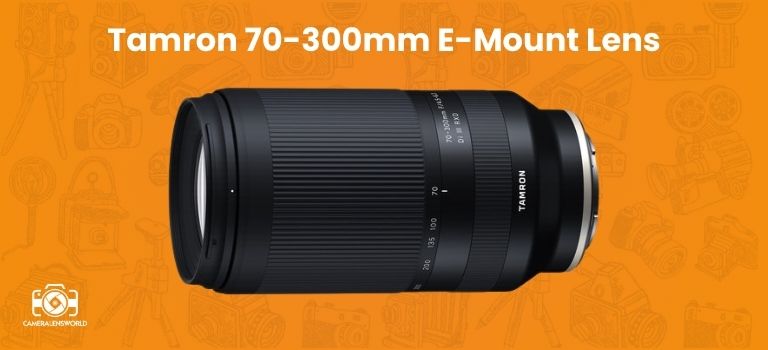

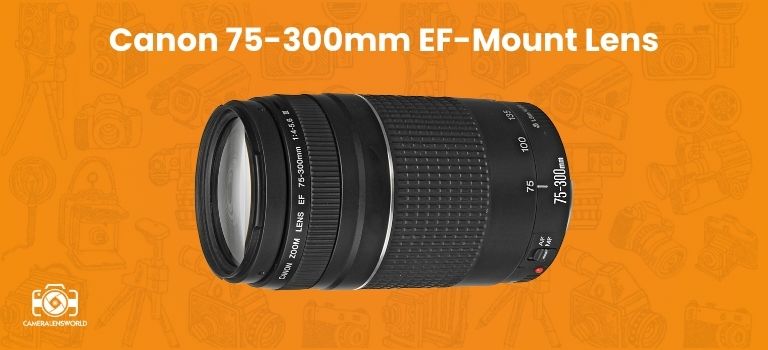
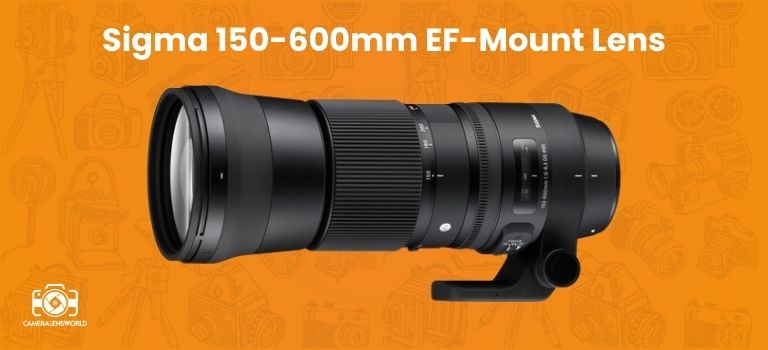
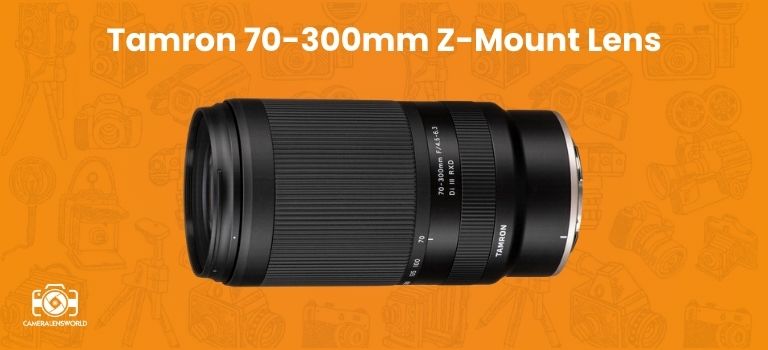
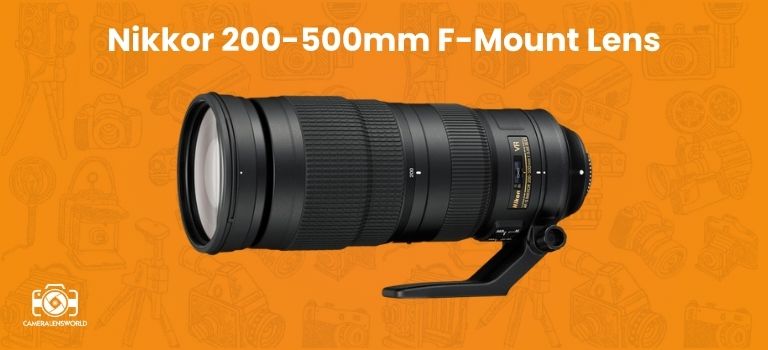

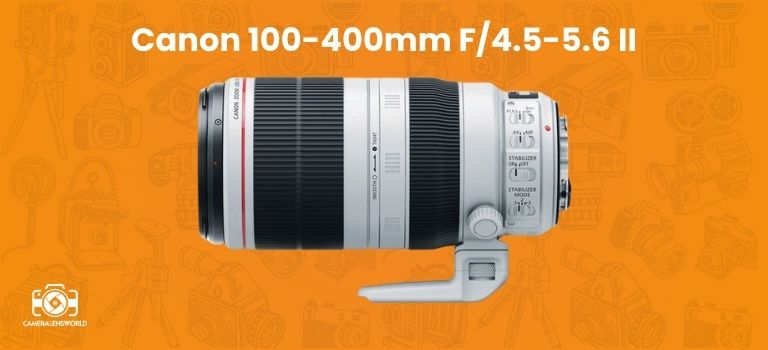
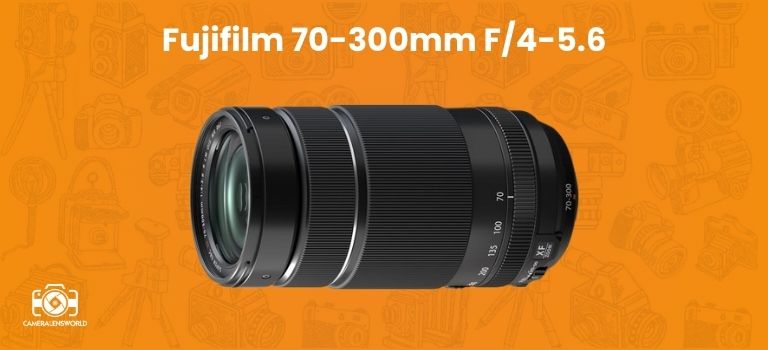
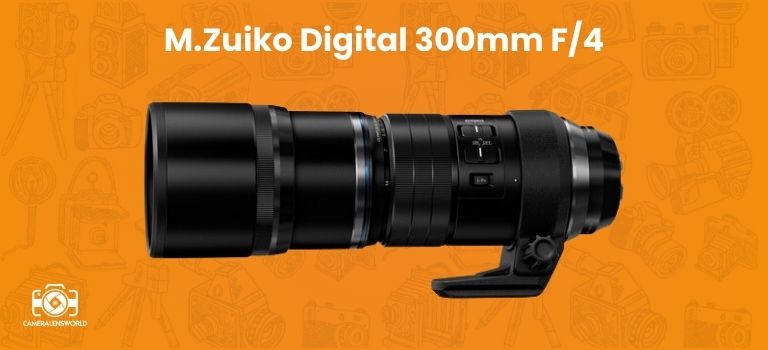
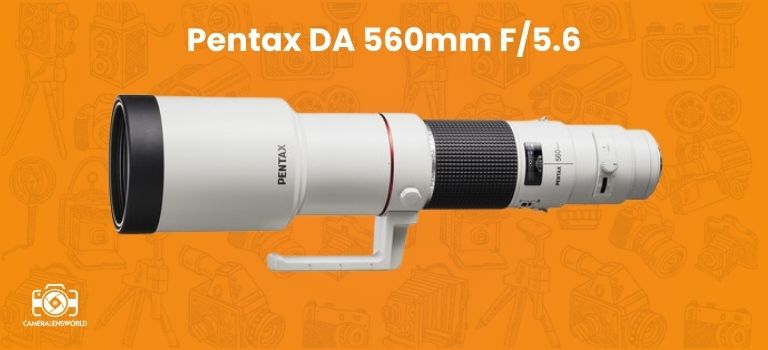

Leave a Reply
You must be logged in to post a comment.